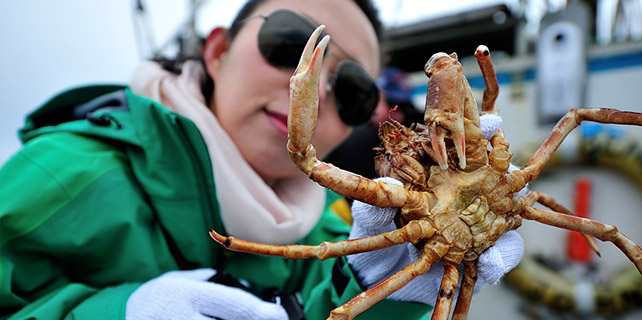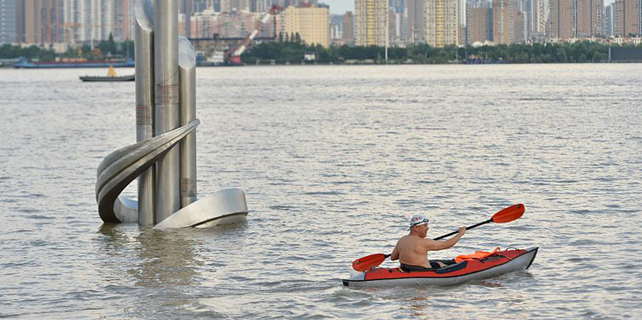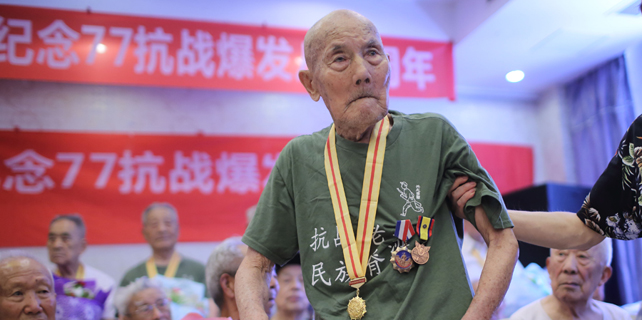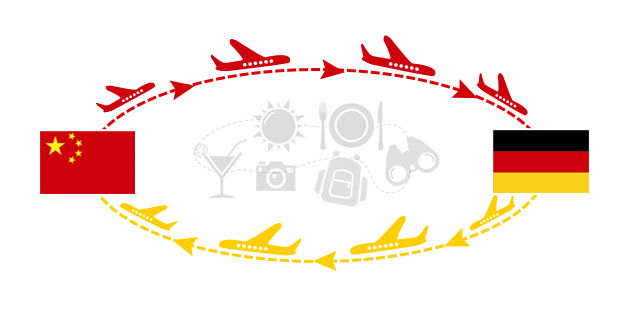India leads pack in trade investigations
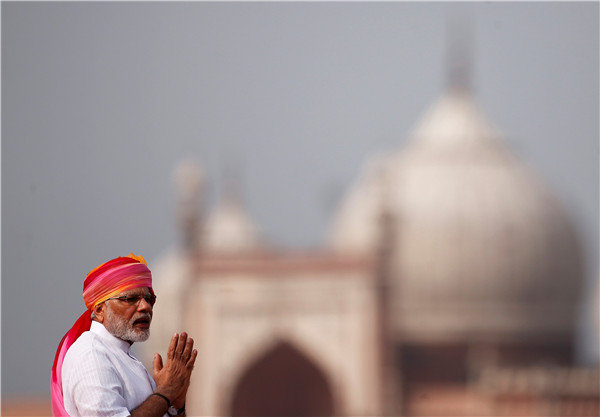 |
|
Indian Prime Minister Narendra Modi gestures as he addresses the nation from the historic Red Fort during Independence Day celebrations in Delhi, India, August 15, 2016. [Photo/Agencies] |
India overtook the United States as the country with the most trade remedy investigations against China in the first half of this year, the Ministry of Commerce said on Thursday.
India initiated 12 investigations against Chinese products, including aluminum foil and photovoltaic products, during the January-June period, followed by the US, which had 11, according to the ministry.
Overall, trade remedy investigations into Chinese products during the period came down around the world but remained at a high level, said Gao Feng, the ministry's spokesman.
China was the subject of 37 trade-remedy investigations worth $5.3 billion, initiated by 15 countries and regions in the first half of 2017, down from 65 cases worth $8.5 billion during the same period of last year.
Cases included 28 antidumping and four subsidy-related investigations involving $5.3 billion of products ranging from truck tires and tubing to steel.
"We oppose any misuse of trade remedy investigations," Gao said. "And there are several things that did not conform to the World Trade Organization rules, leading to strong objections from Chinese manufacturers in related industries."
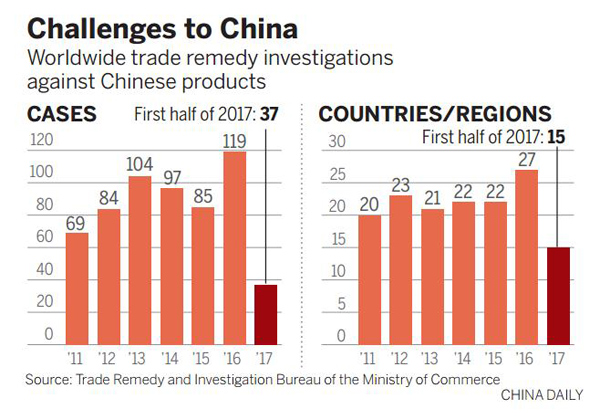
China continues to be the biggest victim of trade protectionism, according to the Reports on G20 Investment Measures released by the United Nations Conference on Trade and Development in June.
"Because India's manufacturing structure is similar to China's, especially in the lighting and photovoltaic industries, both are facing the same problem to boost exports to developed markets," said Li Gang, vice-president of the Chinese Academy of International Trade and Economic Cooperation in Beijing.
Li said India therefore has become more protective for its own factory business while competing with China in third-party markets. It has also adopted trade-remedy measures against countries including the United States, Ukraine, Iran and Kenya on a number of agricultural and manufacturing products.
"We have also discovered that India's trend of launching trade remedy investigations has already shifted from lower-end products such as garments, glass and mining products, to higher-end goods such as new materials and machinery," said Xue Rongjiu, deputy director of the Beijing-based China Society for WTO Studies.
Bilateral trade between China and India amounted to 229 billion yuan ($33.7 billion) between January and May, up by 30.1 percent year-on-year, according to the General Administration of Customs.
To maintain a fair market order, the Ministry of Commerce launched an antidumping investigation in connection with two chemicals-one used in pesticide manufacturing and another used in the pigmentation of various compounds-imported from India in the first half of this year.




